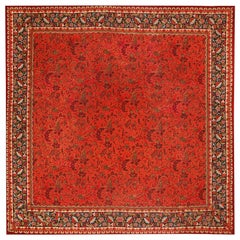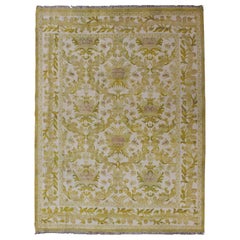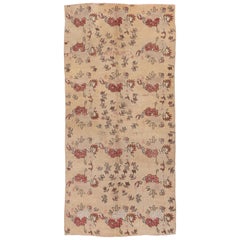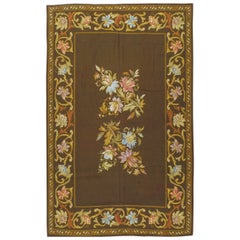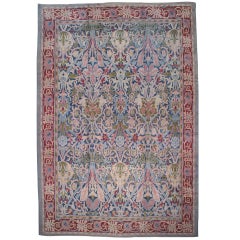Arts and Crafts Rugs and Carpets
Emerging in reaction to industrialization and mass production, the Arts and Crafts movement celebrated handcrafted design as a part of daily life. The history of Arts and Crafts furniture has roots in 1860s England with an emphasis on natural motifs and simple flourishes like mosaics and carvings. This work is characterized by plain construction that showcases the hand of the artisan.
The earliest American Arts and Crafts furniture dates back to the start of the 20th century. Designers working in this style in the United States initially looked to ideas put forth by The Craftsman, a magazine published by Wisconsin native Gustav Stickley, a furniture maker and founder of the Craftsman style. Stickley’s furniture was practical and largely free of ornament. His Craftsman style drew on French Art Nouveau as well as the work he encountered on his travels in England. There, the leading designers of the Arts and Crafts movement included William Morris, who revived historical techniques such as embroidery and printed fabrics in his furnishings, and Charles Voysey, whose minimal approach was in contrast to the ornamentation favored in the Victorian era.
American Arts and Crafts work would come to involve a range of influences unified by an elevation of traditional craftsmanship. The furniture was often built from sturdy woods like oak and mahogany while featuring details such as inlaid metal, tooled leather and ceramic tiles. The style in the United States was led by Stickley, whose clean-lined chairs and benches showcased the grain of the wood, and furniture maker Charles Rohlfs, who was informed by international influences like East Asian and French Art Nouveau design.
Hubs in America included several utopian communities such as Rose Valley in Pennsylvania and the Byrdcliffe Arts and Crafts Colony in New York, where craftspeople made furniture that prioritized function over any decoration. Their work would influence designers and architects including Frank Lloyd Wright, who built some of the most elegant and iconic structures in the United States and likewise embraced a thoughtful use of materials in his furniture.
Find antique Arts and Crafts chairs, tables, cabinets and other authentic period furniture on 1stDibs.
1930s Northern Irish Vintage Arts and Crafts Rugs and Carpets
Wool
1930s Spanish Vintage Arts and Crafts Rugs and Carpets
Wool
1930s Turkish Vintage Arts and Crafts Rugs and Carpets
Wool
1930s Spanish Vintage Arts and Crafts Rugs and Carpets
Wool
1930s Ukrainian Vintage Arts and Crafts Rugs and Carpets
Wool
1930s Spanish Vintage Arts and Crafts Rugs and Carpets
Wool
1930s Spanish Vintage Arts and Crafts Rugs and Carpets
Wool
1960s Turkish Vintage Arts and Crafts Rugs and Carpets
Wool
1940s Spanish Vintage Arts and Crafts Rugs and Carpets
Wool
1870s Ukrainian Antique Arts and Crafts Rugs and Carpets
Wool
2010s Nepalese Arts and Crafts Rugs and Carpets
Wool, Silk
21st Century and Contemporary Spanish Arts and Crafts Rugs and Carpets
Wool
1920s Vintage Arts and Crafts Rugs and Carpets
Wool
1920s European Vintage Arts and Crafts Rugs and Carpets
Wool
Mid-20th Century Irish Arts and Crafts Rugs and Carpets
Wool
Mid-20th Century Turkish Arts and Crafts Rugs and Carpets
Wool
Early 20th Century Russian Arts and Crafts Rugs and Carpets
Wool
Early 20th Century Arts and Crafts Rugs and Carpets
Wool
1950s Vintage Arts and Crafts Rugs and Carpets
Wool
1930s Unknown Vintage Arts and Crafts Rugs and Carpets
Wool
